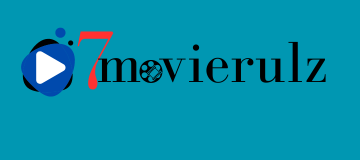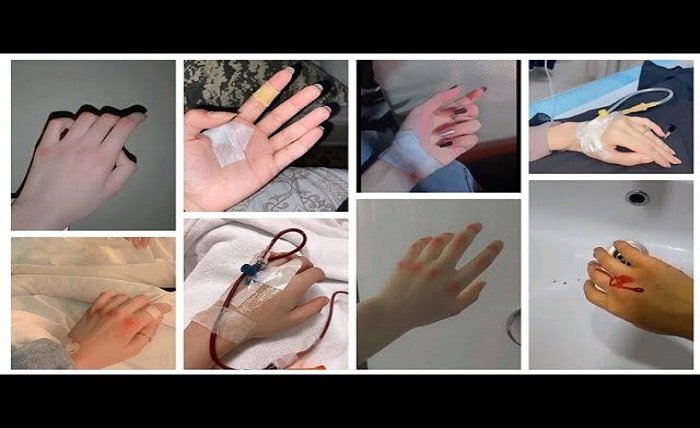The “Hand Cut with Blade Fake Snap” Trend
The keyword “hand cut with blade fake snap” has been circulating on social media, gaining traction as a bizarre and alarming trend. This phrase refers to staged or fake images and videos depicting self-harm, specifically simulated hand cuts made to appear real through editing or props. The intent behind these fake snaps often ranges from shock value and attention-seeking to mental health awareness, though it can be easily misinterpreted. The phenomenon of “hand cut with blade fake snap” reflects the growing influence of visual trends online, particularly among younger users who might not understand the consequences of such actions.
This trend has prompted concern from psychologists, educators, and parents who worry about the normalization of self-harm imagery—even when it is staged. The “hand cut with blade fake snap” movement blurs the line between artistic expression and potential harm, especially when consumed by impressionable audiences. Platforms like TikTok and Instagram have become common grounds for these types of visuals, often with disturbing hashtags and cryptic captions.
Why People Create “Hand Cut with Blade Fake Snap” Content
One reason why individuals engage in “hand cut with blade fake snap“ content is for the sake of virality. In a digital age where attention is currency, shocking visuals can garner views, likes, and shares at unprecedented rates. While some users post fake injury images to raise awareness or express emotion artistically, others do it merely to trend. The keyword “hand cut with blade fake snap” has appeared in various forms—from edited photos to makeup effects mimicking a real injury—just to capture online attention.
This attention-seeking behavior isn’t always harmful in intent but can be misunderstood. The “hand cut with blade fake snap” trend often lacks context, leading to confusion and concern among viewers who may believe the injury is real. Some creators include disclaimers, but not all do, which adds to the ambiguity. At its core, this trend exposes a deeper craving for acknowledgment and connection, though it can backfire if misinterpreted.
Psychological Impact of “Hand Cut with Blade Fake Snap” on Viewers
The keyword “hand cut with blade fake snap” isn’t just about the content creators—it also deeply affects the viewers. Young audiences, particularly teenagers, might see this kind of content and be influenced emotionally or mentally. Repeated exposure to staged self-harm may desensitize viewers or normalize the idea of self-inflicted injury as a coping mechanism, even if it’s fake.
For those already struggling with mental health issues, the “hand cut with blade fake snap” trend can be triggering. The realism portrayed in many of these snaps might remind viewers of past traumas or spark harmful thoughts. Studies suggest that online content portraying self-harm—whether real or fake—can significantly affect the emotional wellbeing of vulnerable users. Therefore, platforms must implement better moderation and flagging systems for keywords like “hand cut with blade fake snap” to protect these viewers.
How “Hand Cut with Blade Fake Snap” Content is Made
The rise of the “hand cut with blade fake snap” trend has led to a surge in DIY tutorials on how to create fake injuries. From using special effects makeup to digital editing tools, creators go to great lengths to make these snaps look as real as possible. This includes using fake blood, prosthetics, and visual filters to simulate a convincing hand cut with blade fake snap.
YouTube, Instagram Reels, and TikTok offer various tutorials showcasing how to simulate wounds using household items like red food dye, glue, and tissue paper. Though these might seem harmless as artistic exercises, their use in creating “hand cut with blade fake snap” content—without context—raises ethical concerns. Misinformation can spread rapidly, and such content might unintentionally glorify or trivialize self-harm.
Risks and Consequences of “Hand Cut with Blade Fake Snap” Content
Engaging in the “hand cut with blade fake snap” trend can lead to numerous consequences—both online and offline. On social platforms, creators risk being banned or flagged for violating community guidelines due to the nature of the content. Fake or real, depictions of self-harm often fall under sensitive content and are subject to strict scrutiny.
Outside the digital world, those participating in “hand cut with blade fake snap” trends may face backlash from friends, family, or educators who misinterpret the snap as real self-harm. There’s also a potential legal angle if the content incites panic or gets reported as an actual emergency. The keyword “hand cut with blade fake snap” has led to instances where emergency services were contacted under false pretenses, causing unnecessary use of resources.
Moreover, participation in these trends might affect one’s digital reputation. Future employers or academic institutions reviewing a person’s online history may misread such posts, creating long-term repercussions for a moment of online shock-value indulgence.
How to Respond to “Hand Cut with Blade Fake Snap” Trends
If you encounter “hand cut with blade fake snap“ content online, it’s important to respond appropriately and responsibly. First, assess whether the content is clearly labeled as fake or artistic. If not, and if the content appears to promote or normalize self-harm—even unintentionally—it’s best to report it through the platform’s safety channels.
Parents, teachers, and guardians must also be vigilant. Educating teenagers about the implications of engaging with “hand cut with blade fake snap” trends can help prevent them from either creating or being negatively affected by such content. Encourage open dialogue about mental health and explain the difference between artistic expression and dangerous mimicry.
For creators themselves, it’s critical to consider how their content might be interpreted. If choosing to post a hand cut with blade fake snap, clear disclaimers and context must be included. Better yet, artists and influencers can channel their creativity into positive awareness campaigns that address the serious nature of self-harm without sensationalizing it.
Alternatives to “Hand Cut with Blade Fake Snap” for Expressing Emotion
Instead of resorting to the “hand cut with blade fake snap” trend to express pain or emotional turmoil, creators and users alike can explore healthier alternatives. Art therapy, journaling, poetry, and spoken word are powerful tools to convey deep emotions. These mediums allow for raw expression without the dangerous or misleading visuals tied to trends like hand cut with blade fake snap.
Social platforms should also encourage the use of positive mental health hashtags and provide visibility to content that promotes healing and support. Using the keyword “hand cut with blade fake snap” as a means to educate others or redirect them toward mental health resources can also help shift the narrative.
Counseling and therapy, both online and in person, offer a safe space to address underlying issues that might drive someone to create or consume content centered around fake self-harm. It’s okay to express pain—but doing so in ways that don’t confuse or hurt others is essential in maintaining a healthy digital environment.
Conclusion
The “hand cut with blade fake snap” trend, while often dismissed as a viral phase, holds deeper psychological, social, and ethical implications. It represents a digital cry for attention, creativity, or even help—but it walks a dangerous line between awareness and misinformation. As consumers and creators, we must take responsibility for how we engage with such content.
Whether you’re someone who’s come across “hand cut with blade fake snap” posts or are tempted to create your own, it’s crucial to recognize the potential harm. Visuals that resemble self-injury can be misinterpreted, trigger trauma, and reinforce unhealthy behaviors. Instead, consider safer, more constructive outlets for emotional expression.
By promoting mental health education, advocating for responsible content creation, and supporting those affected by real emotional struggles, we can move beyond trends like “hand cut with blade fake snap” and foster a more compassionate digital culture.
FAQs
Q1: What does “hand cut with blade fake snap” mean?
A: “Hand cut with blade fake snap” refers to staged or edited content that simulates a hand injury, typically for shock value or artistic effect.
Q2: Is “hand cut with blade fake snap” dangerous?
A: Yes, it can be. Even if the injury is fake, such content can trigger mental health issues or be misinterpreted by viewers.
Q3: Why do people post “hand cut with blade fake snap” content?
A: People may post this type of content for attention, artistic expression, or to raise awareness, though it can often be misunderstood.
Q4: How can I tell if a “hand cut with blade fake snap” is real or fake?
A: Look for signs like disclaimers, makeup effects, or edits. However, if in doubt, treat it seriously and report the content if necessary.
Q5: What should I do if I see “hand cut with blade fake snap” content online?
A: Report the content, avoid sharing it, and seek help if you or someone else feels disturbed or affected by it.





